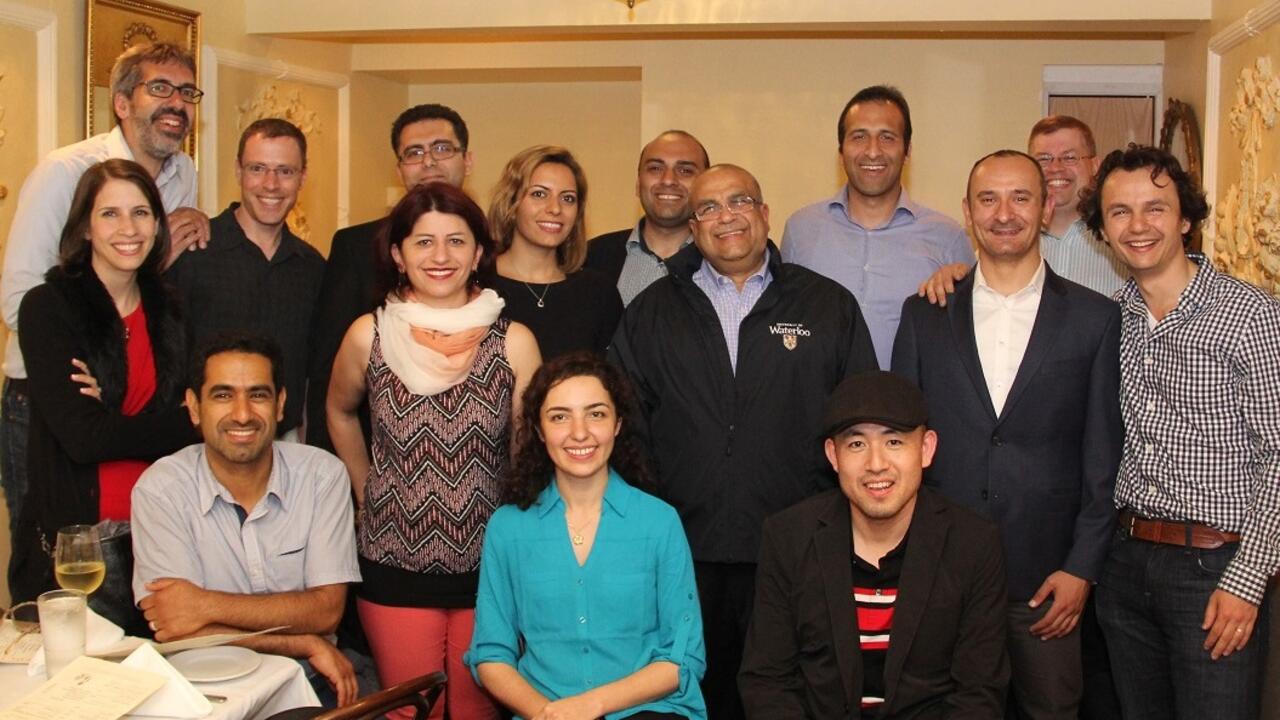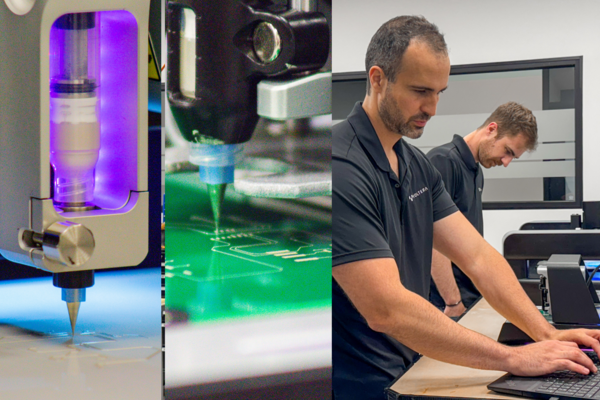
Seeing the potential of radio-frequency applications everywhere
Raafat Mansour holds a tradition of holding a dinner for his former graduate students

Raafat Mansour holds a tradition of holding a dinner for his former graduate students
By Shane Schick Faculty of EngineeringWhen delegates gathered in San Francisco for a big annual conference in his field earlier in 2016, Raafat Mansour was eager to find out how many of his former Waterloo Engineering graduate students were among them.
It has become his tradition to hold a dinner for former and current PhD students who attend the IEEE International Microwave Symposium (IMS).
The count this time around was impressive, with 13 of his former PhD students on hand – four who are now professors, six who are working in the Bay area and three who have positions in industry in Canada.
On a long list of accomplishments – University of Waterloo electrical and computer engineering professor since 2000, founder of the Centre for Integrated RF Engineering (CIRFE), numerous published papers, filer for several patents, startup co-founder, Canada Research Chair in Micro and Nano Integrated Radio-frequency (RF) Systems – Mansour considers nurturing and developing such bright minds one of his biggest.
“So far I have seen 28 PhD students and 29 master’s students graduate, and trained 12 post-doctoral fellows,” he says. “This is what’s been most enjoyable.”
Mansour’s efforts to secure funding for his research and to act as a catalyst for ideas is helping the next generation of Waterloo entrepreneurs bring their work to market.
A case in point is ICSPI-Corp, which he co-founded with Neil Sarkar, an engineering student who did his MSc and PhD degrees in the CIRFE lab under the supervision of Mansour. The company recently released nGauge, the world’s smallest atomic force microscope, and the first 30 systems sold out in a matter of days.
For Mansour, who spent 1986 to 1999 working in COM DEV’s corporate research and development department, ICSPI-Corp underscores his mission to work with students on projects that provide real-world value and make them more marketable in the process.
“My research has always been of an applied nature,” he says, adding that CIRFE, which houses a clean room along with a characterization and test facility, has allowed students to experimentally verify novel concepts and publish their work.

“CIRFE has provided amazing opportunities. This is really where I can see a great asset to the University, as it supports students not only from my research group, but also from other University research groups, and is expected to support students for many years to come.”
Initially accepted into medicine out of high school, Mansour transferred into engineering based on a love of math and a passion for radio-frequency applications that was ignited by reading about the early development of integrated circuits and microwave technologies.
After completing his master’s degree and immigrating to Canada from Egypt, his first PhD research assistant offer came from the University of Waterloo to work under the supervision of Professor Robert MacPhie. Though other offers soon followed from institutions in the U.S. and Canada, Mansour says he has never regretted his decision to stay at Waterloo.
In an era that emphasizes specialization, Mansour’s work can seem unusually wide-ranging, going from superconductivity to microelectromechanical (MEMS) systems and more. He argues, however, that we’re only at the beginning of understanding how continuous demands for downscaling RF devices to the sub-micro region will change the world.
“When I teach my undergrad students, I make this statement – and the students make fun of it -that everything great in your life can somehow be attributed to Maxwell’s Equations,” Mansour says. “Communication, computers, TV, lights, etc. – they all relate to Maxwell’s Equations on a fundamental level. All the stuff I do is related to RF, but I bring other technologies. I see the link and try to bring them together.”

Read more
Voltera prints electronics making prototyping faster and more affordable — accelerating research to market-ready solutions

Read more
Discover how Waterloo alumni are driving Canada’s economy with five tech companies making a local and global impact

Read more
Velocity’s partnership with local hospitals and organizations helps streamline the ideation process for students invested in creating the next big health-tech solution
Read
Engineering stories
Visit
Waterloo Engineering home
Contact
Waterloo Engineering
The University of Waterloo acknowledges that much of our work takes place on the traditional territory of the Neutral, Anishinaabeg, and Haudenosaunee peoples. Our main campus is situated on the Haldimand Tract, the land granted to the Six Nations that includes six miles on each side of the Grand River. Our active work toward reconciliation takes place across our campuses through research, learning, teaching, and community building, and is co-ordinated within the Office of Indigenous Relations.